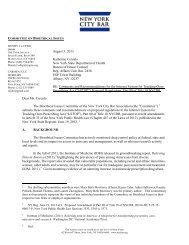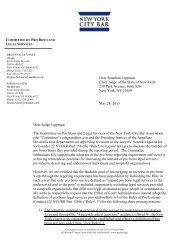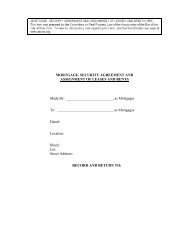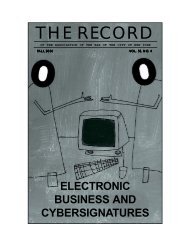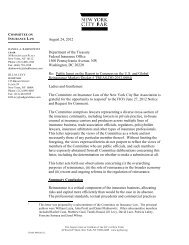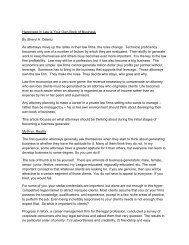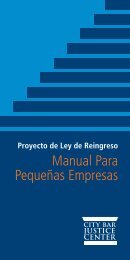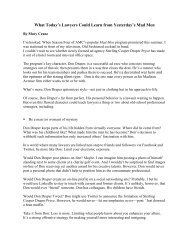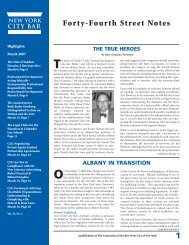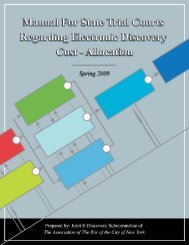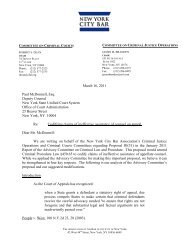2007 Issue 1 - New York City Bar Association
2007 Issue 1 - New York City Bar Association
2007 Issue 1 - New York City Bar Association
You also want an ePaper? Increase the reach of your titles
YUMPU automatically turns print PDFs into web optimized ePapers that Google loves.
L A W Y E R ’ S R O L E I N C O R P O R A T E G O V E R N A N C E<br />
lawyers for the employees, but that decision should not be based on an<br />
assumption that counsel will impede an investigation.<br />
A related issue is whether a corporation should pay severance to a<br />
recently released member of senior management prior to completion of<br />
the investigation. Regulators occasionally object to such payments believing<br />
that they create a presumption there will not be a finding of wrongdoing,<br />
which may prejudice the investigation or give the appearance that<br />
the company condones wrongdoing. There are circumstances, however,<br />
where payment of severance is contractually obligated. Also, severance<br />
payments may help insure that the corporation gains valuable compliance<br />
from a potentially culpable person who would otherwise refuse to<br />
cooperate, or bring closure to a civil settlement agreement that would be<br />
extremely valuable to the corporation.<br />
As a practical matter, providing severance payments will in some instances<br />
be impractical or even imprudent, in light of Section 1103 of SOX,<br />
which empowers the SEC to “petition a Federal district court for a temporary<br />
order requiring the issuer to escrow, subject to court supervision,”<br />
any “extraordinary payment” to a corporate officer while an SEC investigation<br />
is ongoing. 210 The statute does not define “extraordinary payments,”<br />
though the SEC has made clear that it interprets the term broadly, and,<br />
in the sparse litigation under Section 1103 thus far, courts have generally<br />
adopted the SEC’s view. 211 The statutory language has been interpreted<br />
broadly enough to encompass any severance payment, even a payment<br />
pursuant to a previously existing contractual obligation. Section 1103 requires<br />
a minimal showing by the SEC in order for a 45-day freeze to be<br />
entered, which is then extendible to 90 days. 212 If the SEC commences an<br />
enforcement action against the prospective recipient of the frozen payment<br />
prior to the expiration of the freeze, the freeze then stays in place<br />
until the conclusion of the SEC’s enforcement action on the merits. 213<br />
Section 1103 has thus added a potent new weapon to the SEC’s arsenal,<br />
and the SEC has been alert for opportunities to use it. In some instances,<br />
upon being informed of a corporation’s intention to make such<br />
a payment, the SEC has requested that the funds be placed in escrow. 214<br />
210. 15 U.S.C. 78u-3(c)(3)(A)(i).<br />
211. See, e.g., SEC v. Gemstar-TV Guide Int’l, Inc., 401 F.3d 1031, 1034 (9th Cir. 2005) (en banc).<br />
212. 15 U.S.C. 78u-3(c)(3)(A)(iv).<br />
213. 15 U.S.C. 78u-3(c)(3)(B)(i).<br />
214. See, e.g., SEC Press Release No. 2003-184, Commission Settles Civil Fraud Action<br />
Against Vivendi Universal, S.A., Its Former CEO, Jean-Marie Messier, and Its Former CFO,<br />
2 0 0 7 V O L. 6 2 , N O. 1<br />
201



